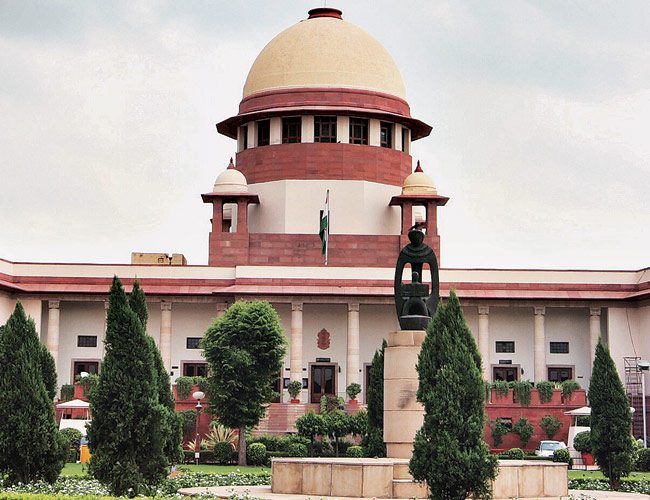The Centre submitted to the Supreme Court that they would leave it to the ‘wisdom’ of the court, and not contest the demand for ‘decriminalisation of adult consensual sexual acts in private’. Similarly, groups like All India Muslim Personal Law Board have said that they would not oppose the decriminalisation of consensual homosexual acts, and would leave it to the Court. However, other religious groups like Utkal Christian Council and Apostle Church of India have intervened in the matter and vehemently opposed the decriminalisation. They also expressed their huge displeasure at the Government’s decision not to defend Section 377. A report, for Different Truths.
The much awaited hearings in the constitutional challenge to Section 377, IPC began last week before the Constitution Bench of the Supreme Court, presided by Chief Justice Dipak Mishra, and Justice Rohington Nariman, Justice A.M. Khanwilkar, Justice D.Y. Chandrachud, and Justice Indu Malhotra. The Petitioners include five accomplished gay and lesbian persons, a gay hotel entrepreneur (Keshav Suri), 20 IIT students (both ex-students and current ones), a gay man who was arrested under Section 377 in 2001, and a group of activists who have been working on health and HIV issues of gay men for almost 20 years (Arif Jafar, and Humsafar Trust). Besides, interventions have been filed by a group of mental health professionals, academicians, Naz Foundation and Voices against 377, who were all parties in the curative petitions before.
Importantly, the Constitution Bench is hearing the fresh batch of petitions, which were first filed in June, 2016, and not the curative petitions that were pending before a larger bench of the Court. Before we get into the arguments of the Petitioners, it is important to know the history of this long standing litigation. Section 377 prohibits anal sex, oral sex and all other penile non-vaginal sexual acts between two individuals, irrespective of age and consent, and makes it a punishable offence, with imprisonment up to a maximum of life imprisonment or ten years, along with fine. In effect, Section 377 penalised consensual sexual acts between two adult men, thereby criminalising the innate sexual expression of homosexual persons.
In December, 2001, Naz Foundation (India) Trust, a NGO working on male sexual health, challenged the validity of Section 377, IPC in Delhi High Court on the ground that it violated the fundamental rights of gay men and transgender persons. In 2003, Ministry of Home Affairs defended the validity of the provision on the basis of ‘public morality’ and ‘public health’, while in 2006, National AIDS Control Organisation (‘NACO’) submitted in the High Court that Section 377 impeded HIV prevention efforts. Finally, on 2nd July, 2009, the High Court struck down Section 377, in so far as it prohibited adult consensual sexual acts in private, as being violative of fundamental rights to equality, non-discrimination, privacy, dignity and health guaranteed under Articles 14, 15 and 21 of the Constitution.
Thereafter, the religious groups from various parts of India appealed against the High Court judgment in the Supreme Court, but the Government did not file an appeal in the Court. On 11th December, 2013, the Supreme Court, in a two judge bench decision led by Justice G.S. Singhvi, reinstated Section 377 and overturned the High Court decision [Suresh Kumar Koushal & Ors. vs. Naz Foundation & Ors. (2014) 1 SCC 1]. Though review petitions against the Supreme Court decision were dismissed in January, 2014, the Supreme Court agreed to hear the curative petitions in an open court in April, 2014, and then referred the batch of curative petitions to a larger bench of five judges in February, 2016, which are still pending.
In the present case, curiously, after much dilly dallying, the Centre submitted to the Supreme Court that they would leave it to the ‘wisdom’ of the court, and not contest the demand for ‘decriminalisation of adult consensual sexual acts in private’. Similarly, groups like All India Muslim Personal Law Board have said that they would not oppose the decriminalisation of consensual homosexual acts, and would leave it to the Court. However, other religious groups like Utkal Christian Council and Apostle Church of India have intervened in the matter and vehemently opposed the decriminalisation. They also expressed their huge displeasure at the Government’s decision not to defend Section 377.
While attacking the Koushal judgment for its complete misapplication of the fundamental rights jurisprudence to the rights of LGBT persons, the Petitioners also highlighted the real effect of Section 377 on the rights and lives of LGBT. They heavily relied on the elaborate enunciation of privacy, autonomy, and dignity that protects the intimate relations of individuals in the privacy judgment delivered last year, along with other landmark judgments of the Supreme Court in transgender rights [NALSA vs. Union of India (2014) 5 SCC 438), and on right to choice in Hadiya’s case [Shafin Jahan vs. Asokan (2018)]. At the same time, some of them also argued that Section 377 severely affects the freedom to express their sexual identity and personhood, whether in their actions, discussion in media, films, etc. The hearings will continue next week.
Anybody who attended the hearings in 2012 and in 2018 realised the stark difference in how the arguments were conducted, and the judges’ observations. In fact, there is a question of the scope of reference, i.e., while Additional Solicitor General Tushar Mehta continuously kept on saying that “the reference was limited to the validity of Section 377, and the Court could not go into civil rights”, Justice Chandrachud and Justice Nariman understood the import of Section 377 on all fundamental rights, and how questions of relationships were intimately connected with Section 377. One is hopeful that the injustice of Koushal would be redressed by the Supreme Court this time, and a positive judgment would ensue. [Navtej Johar v Union of India, Writ Petition (Criminal) No. 76 of 2016.
Amritananda Chakravorty
©IPA Service
Photo from the Internet





 By
By

 By
By
 By
By